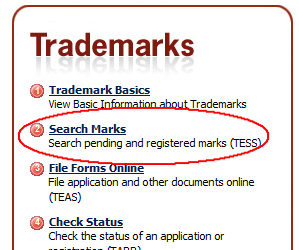
Let’s say you’re in the U.S. You’re about to start a new business. You need to come up with the perfect business name for your new software development company. Oooh, I know! “Microsoft!” No, wait. We can’t do that, can we? That would be trademark infringement. Shoot!
You can’t simply go in and use the name of another company in your industry, or one that could be confusingly similar. A key element of trademark law is that your business name and other branding elements shouldn’t confuse consumers into thinking you’re someone else. In other words, you can get a free ride off of another company’s reputation.
Okay. That’s oversimplifying, but I’m not a lawyer and diving into the deeper realms of trademark law isn’t within our scope today. Instead, let’s talk about conducting a simple trademark search to see if you’re really free to use that great business name you came up with.
What is a Trademark Search?

A trademark search is just the act of checking up on a business name or other potential trademark to make sure it’s not already being used in a confusingly similar way. There are registered trademarks — those officially registered with the United States Patent and Trademark Office (USPTO). However, a trademark doesn’t have to be registered. It’s all about first use in business. Therefore a thorough trademark search would have to go beyond searching the USPTO’s database.
How to Conduct a Basic Trademark Search
While it’s always a good idea to hire an attorney specializing in intellectual property law before investing a lot of time and money into branding a new business venture, you can at least rule out some potential business names on your own. It’s relatively quick and easy. Here is the process:
- Visit the USPTO’s website (http://uspto.gov/).
- Click the link in the Trademark column that says “search marks.” This will take you to the Trademark Electronic Search System (TESS).

Credit: USPTO.gov - Click on “new user form search (basic).” This takes you to the basic search form pictured below.

Credit: USPTO.gov - Enter your search term and click the submit button. Enter “Microsoft” just to see an example. You’ll see a list of registered trademarks involving the word “Microsoft” (or whatever you typed in). Let’s look at an example with no trademarks registered — BizAmmo (a project I launched a few years ago). You’ll see there are no registered trademarks.
Yay! You found a name with no registered trademarks. Don’t get too excited though. Remember, a trademark holder doesn’t have to register their mark with the government for it to be valid. There’s still the first use issue to contend with. Here’s how to move on to the next step of your simple search.
- Go to Google (or your favorite search engine).
- Type in the keyword or phrase you want to check. I like to use quotes around the phrase in this search to bring up exact instances. Search for BizAmmo as an example. Darn. It looks like it’s already being used for something.
- If there are no results, try searching for very similar phrases (like a plural or singular or minor spelling changes). Make sure there is nothing too similar in use. If you did find results in your search, you can take a closer look. Are they in any way related to the industry, product, business, etc. that you wanted to use the name for? If so, it’s time to move on to the next idea. If not, you’re ready to consult with a trademark lawyer to determine if there’s a likelihood for confusion, or if you might be the first to use the trademark in your intended way.
Like I said before, I’m not a lawyer. This tutorial isn’t meant to provide you with a failsafe method of identifying trademarks and it isn’t meant to serve as legal advice. Keep in mind that trademark law is a complicated area and not all trademarks might be found in a Web search or USPTO search (think of a local competing small business that might not be on the Web).
Use this guide as a way to weed out business name and other trademark options with obvious infringement potential, and don’t assume that a lack of results is enough on its own to mean a trademark is yours for the taking. As mentioned, consult with an attorney who specializes in intellectual property law (or more specifically trademark law) when you’ve narrowed down your ideas before you invest a lot in your new venture, especially where international trademark issues might come up.














